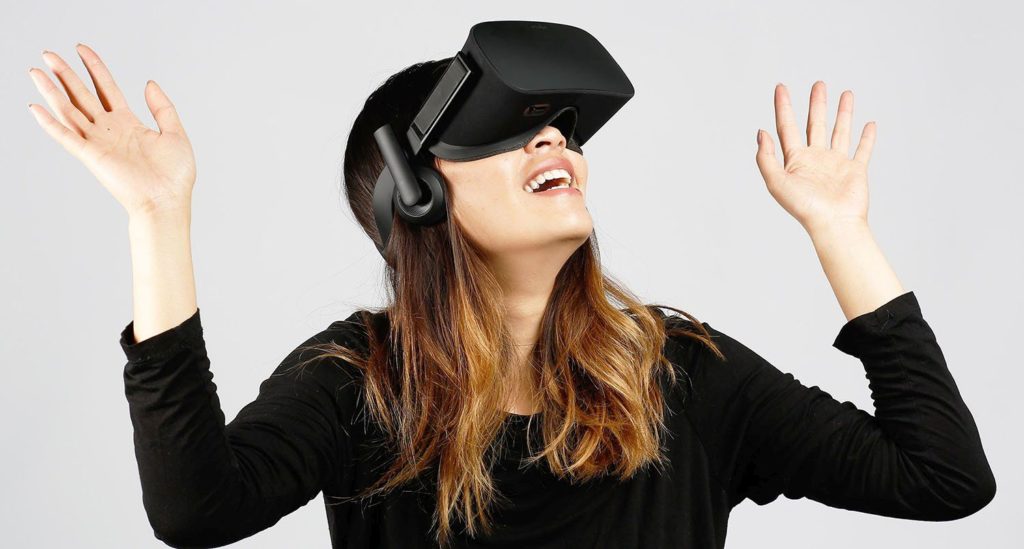At the recent Casual Connect conference in San Francisco, Unity’s chief marketing officer Clive Downie spoke to attendees about the scope of the opportunity ahead in virtual reality (VR) and augmented reality (AR). The time is right to jump into the markets, and Downie made a convincing case for jumping in despite the risks. Unity, being the supplier of development tools used in millions of products, has a unique perspective on the adoption and use of VR and AR, since they provide tools for developing products in those realms. When Downie spoke, [a]listdaily was among the attendees in the packed session.
“People knew a long way back that VR and AR were going to change the world at some point,” Downie said. “We’re just starting to see that now.” We should remind ourselves of the pioneers of decades past who started on early versions of what we are beginning to take for granted. Virtual reality has been a mainstay of science fiction novels and movies for a long time, and early VR devices and headset began to be constructed in the 1970s, with development continuing from that point. “Fifty years ago people dared to dream that VR could change the world,” Downie noted. “While we think we’re at the beginning of a curve, actually we’re at the latter stages of one of the longest technology arcs we’ve been part of.”

The VR market has been buzzing for years now. “There’s a lot of heat around this magical thing called VR,” Downie said. Analyst numbers show that AR/VR is forecasted to hit $120 billion in value by 2020, with about 90 percent of that coming from VR and about 10 percent of that from AR. By comparison, Downie pointed out, the global market for game software in 2016 is projected to be less than $100 billion. Of course, much of the revenue projected for the VR market comes from hardware and from software that’s not games—other entertainment, business and commercial uses, scientific and medical applications and so on.
While some analysts see the progress of VR as a simple linear growth projection over time, Downie rejects that as simplistic. “A linear growth rate isn’t what’s going to happen, and it’s not what we’re seeing, either,” said Downie. “The prediction that we have at Unity is we’re going to see AR and VR start slower than some people predict. Some will say that AR and VR are fizzling out, that it’s just not getting traction, despite things like a $25 billion market cap increase for companies like Nintendo because they dared to do something different.” While Nintendo’s enormous share price rise was due to the success of Pokémon GO, it’s since dropped back somewhat as people realized Nintendo won’t be directly profiting from the title.
“We’ll see this gap of disappointment between perception and reality, and it will be real, but in the end it will be fairly meaningless. Because just like all those people knew 30 or 40 years ago, we have to recognize what we have. We are in this once-in-a-generation production of new tech so compelling that will change everything. This is a once-in-a-generation moment.”
Downie sees VR as a not just an interesting technology, but as a technology that will change the world. Getting there won’t be easy, and those who develop for VR at the beginning are going to have to overcome difficulties.
“Like every major step-change in technology, the early pioneers who grit it out face high risk but supremely great reward,” Downie said. “This is a step-change in technology, right up there with electricity, the combustion engine and the internet. The reason why adoption and use will explode to those levels is fundamentally straightforward: there’s going to come a time and VR and AR will make your life better.”
The point at which VR and AR become viable, revenue-producing markets is of course the critical issue for investors, developers, and consumers. “How close are we to mass adoption? I think we’re closer than ever, and mobile is leading the way,” Downie stated. “This is no disrespect to the excellent Rift, to the Vive, to PlayStation VR, which are putting immense gaming power in the hands of consumers very affordably. They can and will have deep communities of customers, but I believe it is mobile that will speed these new realities to to a voluminous amount of people around the world.”
The pre-eminence of mobile as the VR platform with the biggest audience is already clear from the success of Google Cardboard, with over 5 million units shipped and over a thousand apps in place, Downie noted. Gear VR has a million users in place. “Google announced Daydream, which is going to bring a controller, and right away it will be more functional and accessible and approachable. Facebook 360 was introduced in June, and you don’t need to use a headset. It gets users to move around in a 360 space, and it can be used with both Gear VR and the Rift—getting the masses more used to VR step by step.”
Of course, Downie noted the amazing success of Pokémon GO as getting people familiar with AR—and by extension, VR—preparing the way for more content. “AR and later VR are becoming acceptable as media for people to interact with and get used to,” Downie said. “This is massive adoption on a global scale, This product alone could easily get to 10 percent of that 1 billion consumption number.”
Downie went on to note the tools and techniques necessary to succeed in VR, but he had some general advice of use not only to developers but to marketers as well. “The master rule is there are no rules,” Downie opined. “At this point in the VR experience, people are just trying to figure out what will work and what doesn’t. So you have to take chances, you have to try new things. Don’t let yourself be constrained by what you think will work. That’s the worst thing to do in this moment. Free yourself from the conventions that you already know.”
“And because there are no rules, you have to remember that you’re going to make mistakes. You’ll make more mistakes when you go into AR and VR than you’ve ever made in your game-making career,” Downie warned.
Downie had words of encouragement for game makers and marketers who are looking to jump into the early days of the VR and AR markets. “Great content is going to drive adoption—it always does,” Downie said. “Content is, and always has been, king. That’s where the creators of tomorrow come in. The opportunity is here, it’s real, and the opportunity is waiting for people like you to dream and to invent something we haven’t thought about. Eventually everyone will be in this place. My advice is to get there first, because it’s going to be worth it.”

